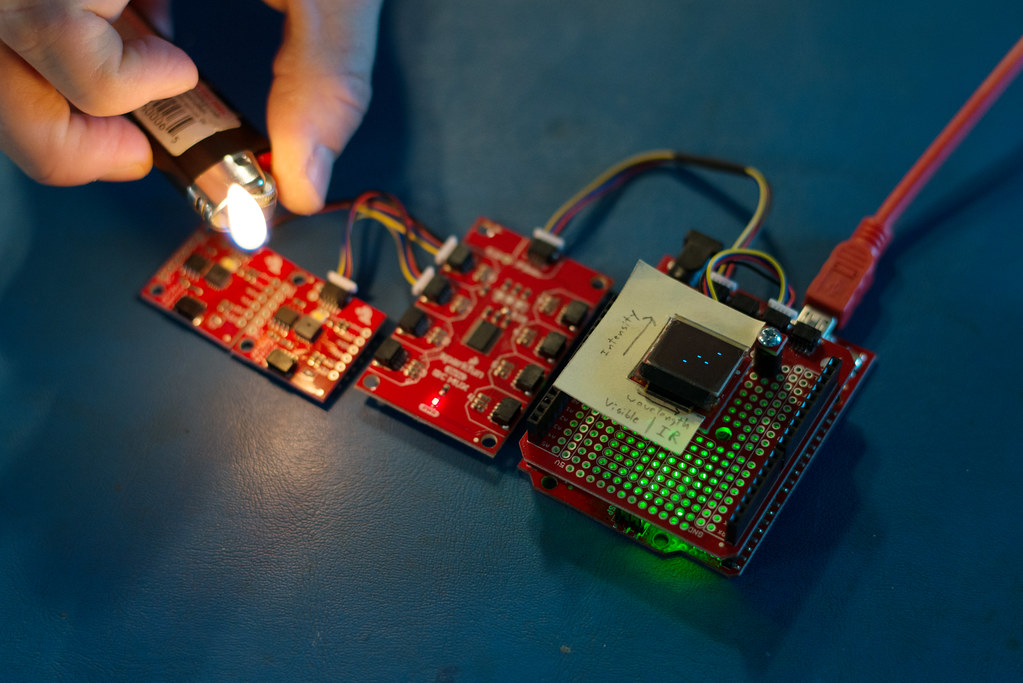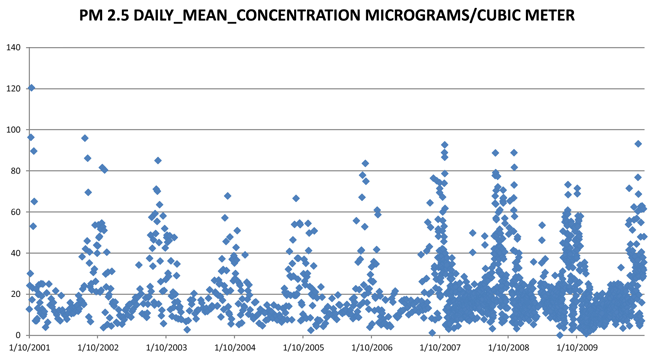Our firm offers sensor data consulting services such as:
- Writing algorithms in languages like python, C++ and Matlab to process data collected from sensors
- Function fitting techniques to generate smooth functions from discrete sensor observations
- Mathematical techniques to compensate for noisy data
- Sensor fusion – integrating the output from multiple sensors
- Machine learning techniques on sensor data
- Inertial Measurement Unit (IMU) data processing and gps coordinates
- Algorithms for 3D reconstruction of faces and objects
- Mathematics and software development for sensor systems involving global positioning systems (GPS).

The development of cheap wireless sensors and mobile devices is causing an explosion is the ability of scientists and engineers to gather huge volumes of data. At the same time, our society is steamrolling towards artificial intelligence and automation. Since almost any autonomous device must have a means of gathering data on which to act, there is a close relationship between automation and sensor analytics. Since the scientists and engineers who gather this data usually are not mathematicians or data scientists, this rapid growth has created a shortage of people with the expertise to develop mathematical algorithms to process all this data and extract useful conclusions.
What’s surprising is how quickly one runs into difficult mathematical problems dealing with sensor data, even with relatively simple sensors. Mathematical transformations are often required to convert the raw data into the relevant quantities. Since sensors often return partial or imperfect data, remarkably complex algorithms must be developed to determine which data points are likely erroneous, and try to fill in the gaps. Random noise in the data can necessitate sophisticated 2D or 3D function fitting algorithms. Difficult statistical problems arise in estimating the confidence intervals in the final metrics, such as key features of fuctions that have been fitted to noisy data.

Customers utilizing a sensing device would prefer not to have to wait several seconds to see the output metrics. In fact, since storing the massive amount of data generated by a continuously active sensor is impractical, algorithms to process the data may even need to run in real time. This creates the challenges of writing fast, efficient algorithms, since even simple sensors can require algorithms that are computationally intensive. Since mobile devices like smart phones and ipads are often used to receive and process sensor data, the algorithms may need to complete quickly using only the computational resources of a mobile device.
The problem becomes even more interesting when you have multiple sensors. A network of similar and disparate sensor types whose data ranges overlap requires some interesting mathematics and statistics in order to combine the data sets into a single coherent picture. This is known as sensor fusion or data fusion.
Sometimes, the person designing the sensor system does not know themselves how to interpret the output of the sensor system. For example, if a network of sensors are monitoring different aspects of complicated machinery, which sensor outputs might indicate that some part of the machine is likely to fail and requires maintenance? This is where machine learning comes in. The mathematics of machine learning allows us to analyse historical data and find hidden features in the data that reliably predict a given outcome. Sometimes, these relationships may not be easily discernible by a human operator. Machine learning marries beautifully with sensor data analysis and has the potential to lead to engineering outcomes that are both effective and mathematically elegant. Check out this page on machine learning for remote sensing applications.
The proliferation of cheap sensors and computing technology is causing the rapid growth of sensor technologies in countless fields, including medical research, biomedical device development, geology, landscape mapping, manufacturing, and oil and gas industries. This is creating a strong demand for sensor data analysis and sensor algorithm development services.
At Genius Mathematics Consultants, we’re as excited about the interesting mathematics of sensor data analysis as we are about making it work for your business. There’s few things more satisfying than solving interesting mathematics problems and seeing the result succeed commercially. Are you a scientist or engineer developing sensing technologies? We’re often told that with increasing specialisation, interdisciplinary collaboration is the future of research.